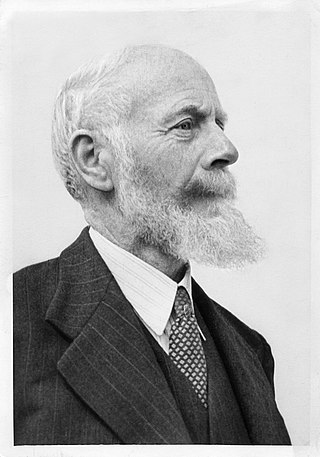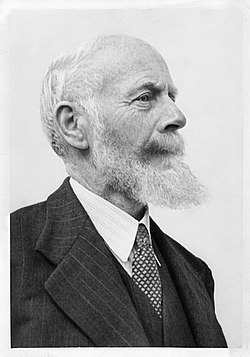Top Qs
Timeline
Chat
Perspective
Josef Ospelt
Prime Minister of Liechtenstein from 1921 to 1922 From Wikipedia, the free encyclopedia
Remove ads
Josef Ospelt (9 January 1881 – 1 June 1962) was a political figure from Liechtenstein who served as the first Prime Minister of Liechtenstein from 1921 to 1922.
Remove ads
Early life and career
Josef Ospelt, son of Julius and Mary (maiden name Seger), was born in Vaduz on 9 January 1881. After having attended a country school in Vaduz, he began working as a government councillor under Governor of Liechtenstein Carl von In der Maur.[1]
Upon Maur's death on 11 December 1913, he assumed the duties of governor in a provisional manner on behalf of Johann II until the appointment of the new governor, Leopold Freiherr von Imhof in April 1914.[1][2] In 1918, Ospelt was a founding member of the Progressive Citizens' Party and was later elected chairman and long-time manager of the newspaper Liechtensteiner Volksblatt.[1]
Remove ads
Prime Minister of Liechtenstein
Summarize
Perspective

Upon the resignation of Josef Peer in March 1921 Ospelt was appointed by Johann II as Governor under the recommendation of Peer and the Landtag of Liechtenstein, once.[1][3] He played a key role in Liechtenstein's constitutional revision, which had been in demand since the November 1918 Liechtenstein putsch.[1][4] He was a member of the advisory committee for the drafting of the constitution and co-signed, along with Prince Karl Aloys of Liechtenstein the constitution of Liechtenstein on 5 October 1921.[1][5]
Under the new constitution, the office of Governor was succeeded by Prime Minister of Liechtenstein and Ospelt, under the recommendation of the Landtag, was appointed by Johann II to serve as the first Prime Minister on 23 March 1921 under the Josef Ospelt cabinet, making him the first official Liechtensteiner head of government.[1][6]
Ospelt resigned on 27 April 1922, reportedly for health reasons, but the actual reason has been widely regarded due to the Christian-Social People's Party victory in the 1922 Liechtenstein general election.[1] He was temporarily succeeded by his deputy Alfons Feger as acting Prime Minister.[6] Under the successor government under Gustav Schädler, Ospelt faced criticism from his term due to his ties with Johann II and former Governor Josef Peer. He defended himself in numerous publications in the Liechtensteiner Volksbatt.[1]
Remove ads
Later life
Summarize
Perspective
After his resignation as Prime Minister on, he moved with his family to Vienna. From 1918 to 1922, he served as treasurer and the royal domain administration. After 1922, he established a legal and insurance agency in Vaduz. In 1925 he was a representative of the Zurich Insurance Group. After the renewed political upheaval in 1928, Ospelt held several public offices. He was among the founding members of the Historical Society in Liechtenstein, which he headed from 1928 to 1955 as chairman and for many years on the Board of the Vintners of Vaduz.[3] From 1930 to 1932 he served as a member of the Landtag of Liechtenstein.[7]

He was a founding member of the Historical Association for the Principality of Liechtenstein in 1901 and a board member from 1918 to 1950. During this time he significantly contributed to the association’s publications and conducted his own research, publishing 24 articles. In addition, he organised archaeological excavations in the country throughout the 1930s and the preservation of Liechtenstein's documents from 1942. He was a contributor to the Liechtenstein National Museum, which opened in 1954.[1]
Personal life

Ospelt married Mathilde, née Ospelt (25 May 1889 –16 April 1960), on 2 October 1916 and they had four children together.[1]
He died on 1 June 1962 in Vaduz, at the age of 81.[8] He was buried at the cemetery in the city along with his wife.
Honours
References
Wikiwand - on
Seamless Wikipedia browsing. On steroids.
Remove ads

